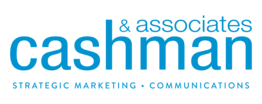April 3, 2020
10 Best Practices for Planning Your COVID-19 Crisis Recovery
While your current marketing plan may have come to a halt, one thing you can plan for, even in this everchanging climate, is a forward-looking recovery strategy. Focus on how you plan to emerge from the crisis-at-hand by evaluating your goals, capabilities, and customers to develop strategies that identify the marketing and communications tactics you’ll need to engage stakeholders, employees, and the community post-pandemic. Cashman & Associates’ has created a step-by-step guide for planning a strong return and sustained success in the future.
1. Look Ahead.
During a crisis, things move quickly, but it’s important to always be thinking ahead. Make time to stop, step back and assess the situation, and start to plan for recovery efforts.
2. Identify a Core Recovery Team
To successfully plan and execute a successful recovery, it’s important to engage a dedicated team to collaboratively spearhead and execute on efforts. We recommend a cross-functional group capable or leveraging expertise from multiple departments and addressing a variety of creative, business and operational needs.
3. Assess and/or Anticipate the Damage
Before strategizing recovery efforts, it’s important to have a complete understanding of the crisis and the impact it has, and may continue to have, on all areas of your business, consumers, and industry at-large. Areas to examine include consumer behaviors, stakeholder attitudes toward the company, corporate reputation, industry perception, financial state, and if will there be permanent closures or consolidation that need to be communicated.
4. Align on Desired Goals and Set Realistic Outcomes
Identify your brand’s communication goals and set realistic outcomes for success in recovery. It is critical to manage recovery expectations at all levels of the organization. Properly managed expectations can determine the success or failure of even the best-laid strategies, yet they are often overlooked.All Categories
5. Develop a strategy
Create a marketing and communications strategy that will lead the company on a path toward stability and profitability as the economic climate begins to recuperate. The strategy should outline programs or tactics specifically designed to address each area of the brand impacted, with the intention of repairing any damage done. Consider community relations, charitable efforts, and giveback programs as layers within tactical execution to showcase authentic goodwill and cultivate positive brand perception and loyalty.
6. Select tactics
When selecting tactics to support your brand’s recovery, consider which facets of marketing will drive the most value to your consumer and will be most effective in engaging your target audiences in impactful ways. For example:
- Public relations: consider a series of profile stories, expert thought leadership articles, contributed content, or all of the above. Publicity drives third-party credibility, enhanced public perception and trust in your brand. Following a crisis, PR can be among the most valuable tactics to employ.
- Social media: it’s important to establish a positive, strong, and authentic voice, paired with engaging content and high-quality multimedia. Most importantly, social media is about engagement and two-way communication. Be sure to constantly monitor your feeds, be prepared for any/all types of comments, and think before you “speak.”
- Influencer Marketing has become one of the most impactful marketing tactics in today’s modern world. When partnering with influencers, make sure your brands align, you clearly communicate your goals, and you are mindful about the messages shared during a sensitive time.
- Direct Marketing can be an extremely effective tactic in communicating with your audiences during crisis recovery. Some helpful hints: have a strong call to action, share strong visuals, and humanize your message – a good way to do this is with a personal message from the leader or face of the brand.
7. Consider a Phased Approach
COVID-19 is an unprecedented situation that continues to evolve. Given the uncertainty of what lies ahead, determining the timeline for a recovery plan can be a challenge for brands. By building a strategy that considers the various phases of recovery, your brand will have a greater ability to adapt to more unanticipated shifts.
8. Craft Recovery Messaging
It’s paramount to have crisis messaging prepared. This will be utilized when the core of the crisis is behind us, and brands are planning to re-engage consumers and open their doors. It’s important to develop messaging that maintains sensitivity, humility and authenticity surrounding the hardships that took place, but also turns the focus to a message of strength, resilience and hope.
9. Keep employees informed
During times of both crisis and recovery, exercising transparency is key to instill a sense of security among your team. It can be a scary time, and people will have questions. It’s important to share your plans for recovery so that those supporting your business feel a sense of comfort, empowerment and motivation to align with the recovery efforts in a strong and unified way.
10. Follow words with actions
When the crisis is behind us, you will be prepared with a strategy in place and a team to support you. To effectively execute your recovery plan, make sure to use clear delegation. Outline roles and responsibilities set deadlines and be clear on your expectations and desired outcomes.



